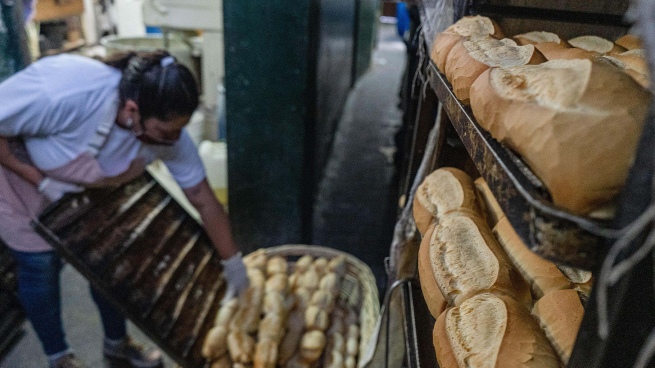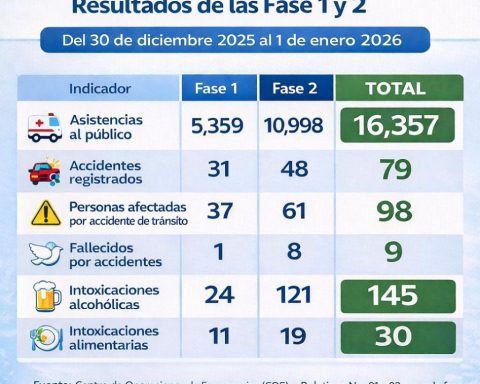This Tuesday the Uruguayan Society of Tobacco (SUT) presented a Amparo action before the Justice against the decree that made the packaging of cigarette boxes more flexible.
“Decree 282/022 means a clear setback in health regulations and contravenes the Framework Convention of the World Health Organization (WHO) for Tobacco Control and current legislation, introducing changes in the legal regime of plain packaging,” the SUT said in a statement.
The organism had presented in September a administrative appeal of revocation before the Executive Power. The difference between the two measures lies in the fact that the amparo action is given at the level of the Judicial Power, while the administrative appeal is aimed at the Executive, which has not yet responded to the proposal but has a term of 150 days from the time it was filed (19 of September).
Now, the writ of amparo asks the Executive Branch to order the immediate stay of execution of the decree “until the Contentious Administrative Court (TCA) dictates [la] Executory judgment”.
What is the SUT based on?
In the document, of 28 pages and to which he agreed The Observerthe Tobacco Society argues why the decree should be revoked, with a particular focus on the health of the “most vulnerable” population: children and adolescents.
In the first place, they affirm that smoking is an epidemic —according to the WHO— and that, in Uruguay, it is “one of the main causes of death”. In this sense, there is also concern about thesignificant increase” in the number of smokers among children and adolescents in the worldstates the SUT, citing the WHO Framework Convention for Tobacco Control, ratified by Uruguay in the law 17,793 (July 2004).
“Uruguayan legislation, harmonized with the provisions of the Framework Convention, establishes as the axis of health protection the total prohibition of advertising, promotion and sponsorship of tobacco products and the packaging or labeling of neutral or generic design. However, the recent modification to the regulation of the law introduced by Decree 282/022 flagrantly contravenes” the legislation, maintains the SUT in the text.
He also considers that the recently approved decree violates essential rights to health -mainly children and adolescents-, to the protection of the environment free of tobacco smoke and to special protection to encouragement of tobacco consumption.
As an example, the Tobacco Society refers to the third article of the Framework Agreement, which includes within its objectives that of “‘protect present and future generations’ from the devastating consequences of smoking”. This “further justifies the need for protection” of children and adolescents in this matter, they insist, in line with this international treaty.
In this regard, according to data from the National Drug Board cited by the organizationthe prevalence of tobacco use in young people between 13 and 17 years old has decreased from 30.2% in 2003 to 9% in 2021.
“The actions of the State constitute a flagrant breach of the obligations in relation to the human rights of children and adolescents, in addition to constituting a clear disregard of the imperative of the best interests of the child and an evident case of clearly illegitimate regressiveness”, attacked the SUT.
Also, he claimed that the State did not carry out prior consultations to the academy, scientific community and other organizations specialized in the subject prior to the promulgation of the decree.
Before and after
By way of comparison, the SUT highlights the main modifications introduced by decree 282/022, mainly when contrasting it with 120/019 (which regulates the law 18.256), which is the one to which the former gave new wording.
• Removes the prohibition on the use of any other material other than cardboard for cigarette packs;
• Eliminate anticipation about features with which he had to comply inside of the boxwhich previously had to be “plain white with a matte finish and may only contain a plain silver metallic paper cover”;
• In line with the above, also removes the prohibition to include any other element in the boxes;
• It allows to incorporate distinctive elements on the cigarette —such as logos or design or writing elements— and inside the box to “determine the authenticity of the product or its traceability in order to detect and combat its diversion or adulteration”, according to the wording of the new decree;
• It allows also, for the same purpose, the incorporation of the brand in the cigarette filterY
• Leave it to the free discretion of the manufacturers determining the packaging inside.
In this way, the packaging will only maintain the dimensions of the package, the color of the cellophane and the color and material of the cigarette filter, argued the Tobacco Society.
Therefore, “it is then possible to ask: To what extent can this be considered plain packaging?”, he questioned in the document; In his opinion, precisely what the new decree achieves is “break with the standardization of plain packaging”, which “seeks to avoid the differentiation opportunity that attracts consumers”.

















